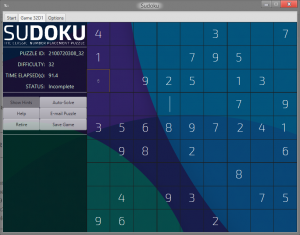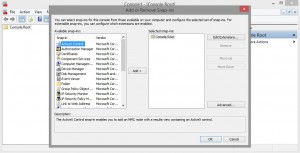Northern Wind Club

Progress lies not in enhancing what [already] is, but in advancing toward what [could] be.
~ Khalil Gibran
The Northern Wind Club is a small social club that takes up projects in and around the Sheridan community, and through efforts between our club and clients, strive towards their successful completion.
We operate on a request and case basis; analogous to a service club.
These projects can be anything, and are decided upon by various factors including interest, resources, time, as well as the spirit of the request.
Do you dislike large, unorganized groups? Hate it when things never get done? Have a niche skill set that you’re dying to exercise? Or perhaps you’re a fanatic of progression and helping others.
In that case, the Northern Wind Club may be the place for you.
Sudoku Engine
Sudoku Engine

Java Sudoku Engine is a project built using FXML for PROG24178 at Sheridan College. It’s a neat little desktop application that generates Sudoku puzzles and contains a few nifty features that I’m sure Sudoku fanatics will love.
Check it out at Github, where you can also download it.
WHAT IS SUDOKU
Sudoku is an old number-placement puzzle, originating with recordable evidence during the 1800’s from an experiment with magic squares. The objective of Sudoku is to fill a grid with digits between 1-9 – the catch being that no two are to be repeated in a row, column, and individual 3×3 square. The end result can be compared to that of a Latin Square, a collection of elements with a nearly indistinguishable pattern.
Site Update – SSL
Added SSL to alvinr.ca
In the process of migrating insecure (pages with mixed content) to HTTPS
Why vSphere Web Client runs on port 9443
Admittedly, I’ve been on this issue far too long. And by issue, I should say issues, all of which may/not resemble the following:
- Administrator@vsphere.local lacks basic permissions.
- vCenter Server doesn’t appear in inventory, or is invisible.
ERROR: Failed to connect to host _______in the bottom-right corner (notification)Failed to verify the SSL certificate for one or more vCenter Server Systems: https://vCenterServerFQDN:443/sdk[00404 error 'Default'] Failed to intialize VMware VirtualCenter. Shutting down...from vpxd logs.
BACKGROUND:
My goal was to migrate my vCenter Server 5.5U2 environment to Windows Server 2012.
Instead, I ended up setting up a new vCenter Server instance with all 4 services installed on the same host. The host is a fresh VM hosted upon ESXi 5.5, and connected to a respected domain & DNS server.
The issues begin rolling in when attempting to use the vSphere Web Interface to add my ESXi host to the data center.
However, I found myself unable to do anything but login into the web client (cannot change roles/permissions, create data centers, create VMs, add hosts, look at logs, and more).
APPARENT PROBLEM:
vSphere’s Web Client runs on port 9443, which is a bit of a pain to see and enter as a URL. As such, I decided to change it to port 443, commonly used by HTTPS and recognized by browsers, eliminating the need to enter a port after my web client’s address. This was done by editing vCenter’s Tomcat Server config (seen more below).
However, vSphere’s decision to use 9443 was not out of spite. Port 443 was used for:several other services, including:
- WS-Management (also requires port 80 to be open)
- vSphere Client access to vSphere Update Manager
- Third-party network management Client connections to vCenter Server
- Third-party network management Clients access to hosts
- Monitor data transfer from SDK clients.
All of which are present and accounted in Required ports for VMware vCenter Server 5.5 (2051575).
SOLUTION:
Revert the port-change in the Tomcat Server’s config back to 9443.
- Launch
services.msc[START>RUN>services.msc]. - Stop the service VMware VirtualCenter Server service.
- Navigate to
C:\Program Files\VMware\Infrastructure\vSphereWebClient\server\configuration\ - Copy the file
tomcat-server.xmlto a readable/writable location (e.g. Documents or Desktop. - Open the copied
tomcat-server.xmlwith a text editor, such as Notepad, Notepad++, or Sublime. - Within the
<Service name="Canalina">container, look for the following line (for me, it was the second line):<Connector port="####" protocol="HTTP/1.1" SSLEnabled="true" ...> - Change the port listed (
####) back to 9443. - Rename
C:\Program Files\VMware\Infrastructure\vSphereWebClient\server\configuration\tomcat-server.xmltotomcat-server_BACKUP.xml - Copy the copied
tomcat-server.xmlfile toC:\Program Files\VMware\Infrastructure\vSphereWebClient\server\configuration\ - Restart the vCenter Server.
I’m sure that there’s a way to safely change this port (maybe by NOT doing the ‘simple’ installation!), but for now, I’ll settle with entering 5 characters after my vCenter server address. I’ll continue to toy around with this, and see if I could figure it out.
I’m also quite sure that this process varies for the vCenter Server APPLIANCE. As such, please don’t follow this with intentions to fix a similar issue on said appliance.
And please, don’t be frustrated if this isn’t the solution you’re looking for, or if it breaks something (that’s what tomcat-server_BACKUP.xml is for). I’d suggest reading further at KB2050273 or KB1010837.
Anyways, good luck with setting up your vCenter Server environment!
Can YOU Follow Instructions?
Whether you’re making touchdowns, placing bricks, or behind the steering wheel, INSTRUCTIONS are critical in ensuring optimal performance and success. Without instructions written by experienced individuals, many tasks would seem unnecessarily more difficult, such as baking caramel shortbread, or near impossible with the case of IKEA furniture.
I would like to introduce a new app, an assessment that tests ones’ ability to follow instructions.
The following is a javascript web application running completely client-side. Nothing is stored, or cached, or ever delivered elsewhere.
Can YOU follow instructions?
Good luck, and have a great day!
Alvin
Garden Images
Hey there!
For all Grade 12 students at FMSS, today is a special day; the final day of school.
Final exams were concluded for all courses today, with report cards being distributed Thursday.
Although disheartening, this is a milestone that will lead to many new, crazy, and awesome adventures in the future. I wish all graduates an extraordinary summer, and the best of luck in their future!
To celebrate such an occasion, here’s something pleasing to look at; rays of sunshine illuminating a small garden box plant.

LTT – Ellie Goulding – Beating Heart (Vindata Remix)
Hello there,
I recently came across this piece by mistake when browsing a SuicideSheep chillstep playlist.
Although startled, this piece has a unique drop that I would’ve never foreseen.
Presenting, Beating Heart by Ellie Goulding, a Vindata Remix.
COMPLETE – Project Minecraft + NEW About Page
Hey there!
Project Minecraft is now complete. Upon accessing the page, you will be able to:
- See a list of online servers.
- View raw server properties of all available servers.
- See a list of offline servers.
The data on this page updates every ~2 minutes.
Secondly, there is now an About Page.
This page will function as both an about page, and a CONTACT page.
Anyways, that covers it for new site changes.
Have a great day!
Windows System Management – Utility Comparison
Managing a Windows System can be difficult; not because of a lack of customization-ability, but rather a question of what utility to use.
Here’s a quick overview of several built-in Windows Utilities that can aid you in your modifications whilst ensuring safety away from 3rd party software.
Control Panel & Settings
Due to the fact that Settings is but a prettier, albeit limited duplicate of Control Panel, we’ll stick to discussing Control Panel.
The common, classical, go-to interface for accessing various GUI applets with options and wizards to help configure hardware and software. From setting up a network to adding a printer, Control Panel is the one-stop shelf for accessing the various utilities and setting screens for nearly everything.
With the exception of new icons and the Windows 8+ Settings interface, Control Panel has relatively remained constant throughout multiple versions of Windows.

Intended for:
- Common Windows OS Users who may or may not know what changes need to be made. The simple GUI serves as a walk through.
- Quick and simple GENERIC system/hardware modifications.
- Safe modifications that may need to be done by various users of various levels (e.g. Standard users to Administrators).
Not Intended for:
- Network Administrators, no simple way to port changes over various machines at the same time, unless if changes are included in an image.
- Those seeking to change advanced parameters not found in Control Panel (e.g. Modifying login-screen, Security policies).
- Integration with installer utilities.
- Automation of tasks.
Microsoft Management Console (MMC)
The ultimate toolbox containing various utilities to make system-wide, even network-wide, changes. MMC itself is a ‘console’, a mere shell or casing that houses the framework and interface for various utilities known as Snap-Ins. These snap-ins themselves range from various utilities such as Disk Management to Event Viewer.
MMC is essentially an advanced control panel with direct utilities for changing advanced settings across sessions, users, groups, and even machines – take Windows Server Group Policy for instance. MMC allows a user to rapidly deploy system changes that have a wide-area of effect. Take Local Group Policy for instance, where a System Admin can quickly designate a password length restriction across various grouped users.
MMC is known as one of the few legacy applications that have never really changed with time, having an interface today that still resembles that of the Windows 2000 MMC.

Intended for:
- System Administrators who wish to deploy advanced settings, and have a need for a tidy, tabular work-space.
- Deploying various settings and policies across certain groups of users, or systems, in a quick and clean method.
- Role-based systems administration, where different admins utilize different sets of consoles loaded with specific utilities for specific tasks (e.g. Logger using Event Viewer, Account Manager using Local Groups & Users, as well as Group Policy).
- Educator/Student learning about the different configurable settings in Windows – MMC Snap-Ins have useful in-depth tool tips.
- Developers who wish to create a modification utility for their software/hardware.
Not Intended for:
- Access by standard users for system modification.
- System developers who wish to configure advanced/custom parameters of software.
- Access by software installers or 3rd party for automation.
PowerShell
The competitor to the popular Unix terminal and predecessor of Command Prompt, Powershell has brought with it a new look, and set of tools that have changed the way Windows users think of CMD.
Built upon the .NET Framework, Powershell boasts a set of powerful administrative tasks in the form of Cmdlets that allow the management of local and remote systems; both Windows and Linux. Using the .NET Framework allows for full windows system integration, as well as the simplicity that comes from being an experienced user in .NET.
Powershell comes included with Windows 7+ with several editions; x86, x64, and ISE. Powershell ISE is an integrated scripting environment; essentially Powershell with a GUI. This makes ISE perfect for educators/learners, or for users creating complex scripts who require an IDE-like interface.

Intended for:
- Automation of various windows tasks, services, and applications.
- Administration of networked/domain machines.
- Custom scripts for windows management, or even .NET Framework applications.
- Low-graphic, limited GUI, or limited resource environments.
Not Intended for:
- Day-by-day system modification by the common user.
- New users to the command-line interface (steep learning curve).
Registry & Regedit
Windows Registry is a database storing Windows configuration settings. The Registry is the main location for configuration information accessed by other hardware and applications, including other system configuration utilities such as Control Panel, and CMD’s.
RegEdit is a system utility that sorts Registry keys and information into a GUI, where it is sorted hierarchical for view and modification by experienced system administrators/engineers. This utility also has the capability of exporting sets of registry data for backup, or for deployment across other machines.
Unlike other configuration utilities and applications, the Registry has no ‘safe’ method of modification. This requires a user to be experienced with the workings of the Windows registry, as a slight misconfiguration could lead to system instability. It is normally recommended to leave the Registry untouched.

Intended for:
- Advanced system administration/engineering in an experimental environment.
- Debugging or engineering of critical system/application processes.
- Housing of application configuration data.
Not Intended for:
- Administration by human users.
- Automated configuration by scripts, OR cleaning/optimization.
- Common access. High security and elevation recommended.
- Storing user data, such as media or documents.
Anyways, I hope this clears up a lot of misconceptions many have with various system configuration tools. As with anything, there is no “Best, or Worst” utility. There is only the utility that best fits your needs.

